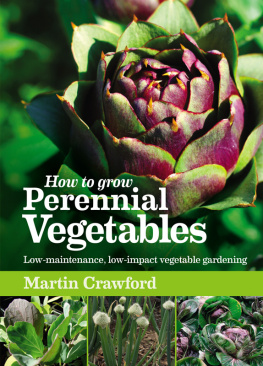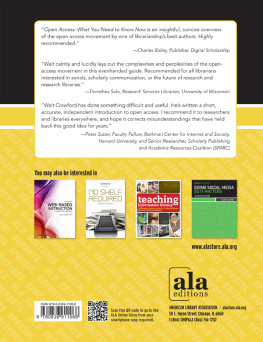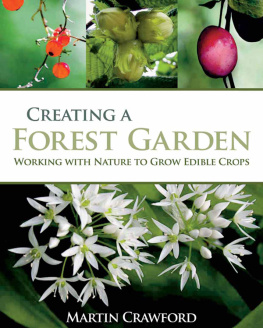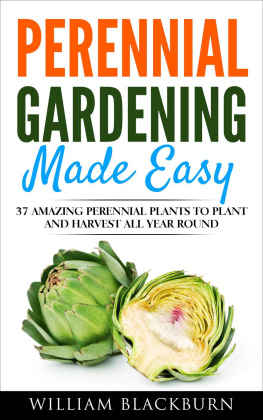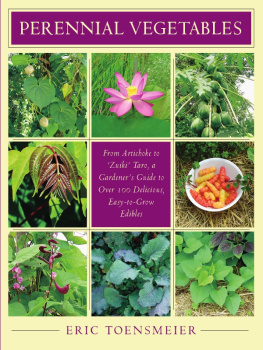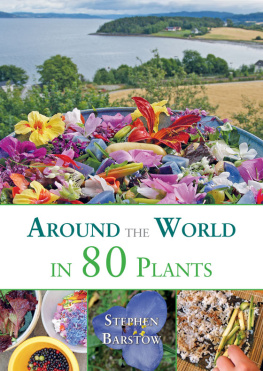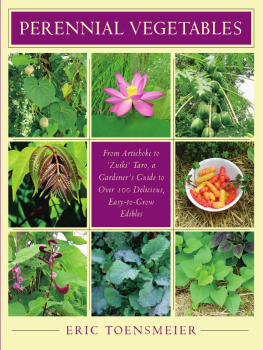
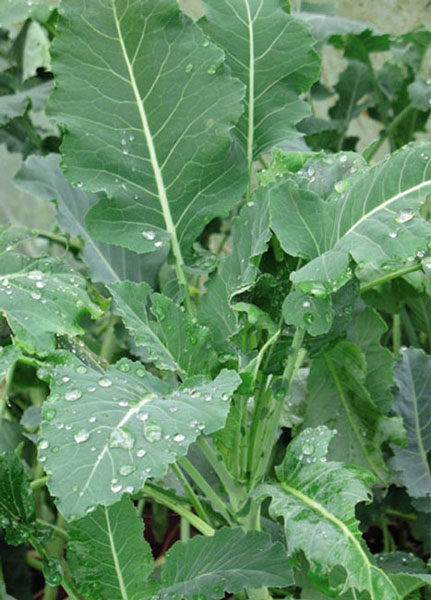

First published in 2012 by
Green Books,
Dartington Space, Dartington Hall,
Totnes, Devon TQ9 6EN
2012 Martin Crawford
All rights reserved
No part of this book may be used or reproduced in any manner without written permission, except in the case of brief quotations in critical articles or reviews.
Design by Jayne Jones
Illustrations by Marion Smylie-Wild (www.marionsmylie.co.uk)
For photograph credits see page 218
Print edition ISBN 978 1 900322 84 3
PDF format ISBN 978 0 85784 093 6
ePub format ISBN 978 0 85784 094 3
Disclaimer: Many things we eat as a matter of course potatoes, beans, rhubarb, sorrel (to name but a few) are all toxic to some degree if not eaten in the right way, at the right time and with the right preparation. At the time of going to press, the advice and information in this book are believed to be true and accurate, and if plants are eaten according to the guidance given here, they are safe. However, someone, somewhere, is allergic to almost anything, so if you are trying completely new plants to eat, try them in moderation to begin with. The author and publishers accept no liability for actions inspired by this book.
Page 2 image: sea kale
Martin is a true pioneer and his work deserves respect and celebration.
Permaculture magazine
Martin Crawford has spent 15 years creating what is almost certainly the best forest garden in the temperate world. Hes also a remarkable researcher of information on plants and their ecology, and the breadth of his knowledge matches the depth of his experience.
Patrick Whitefield, author of Permaculture in a Nutshell
Martin Crawford is a frontiersman, a pioneering teacher and an inspiration. Both his work and his garden are national treasures.
Chris Nichols, Director of the Ashridge MSc in Sustainability and Responsibility
There can be nothing, absolutely nothing, more important to the future of humankind and of our fellow creatures than agroforestry: raising trees, crops and livestock in productive and sustainable harmony. People worldwide have known this for millennia, but we in the West, as is our way, have put agriculture in one camp, forestry in another, and wildlife conservation in a third and engineered a turf war between the three. Martin Crawford is among the few brave souls who have stood out against the Western trend.
Colin Tudge, author of The Secret Life of Trees and Consider the Birds
To Rosie and Tom, with love.
Acknowledgements
It seems appropriate to thank a few people who, over the years, have guided and nudged me in various ways and without whom I may have ended up doing something quite different. So thanks to John Dalby, Ben Foley and Pam and Nick Rodway.
Thanks to Marion for her great drawings and calm enthusiasm.
Thanks to the folks at Green Books for turning my text into a magnificent-looking book.
My greatest thanks, as ever, are due to Sandra, for her constant encouragement and sense of humour.
Foreword
Even the most enthusiastic of us vegetable growers tend to be a bit set in our ways hidebound by tradition and convention; drawing on decades of well-hoed wisdom. We might be converts to raised beds and no-dig systems, but rarely do we question or seek to expand the range of proven veg crops that has served so many generations for so long. For some, even growing things like bulb fennel or rocket seems a bit racy!
This lovely book makes it clear that we are not just missing a trick, we are missing a feast. As one who loves to forage, and not just for berries and nuts but also for shoots, stems and leaves, I find the case argued here particularly compelling. Almost by definition, wild plants that yield edible crops are perennials including irresistible seasonal favourites like nettles, sorrel, alexanders and elderflowers.
To me, growing perennial vegetables is the perfect fusion of foraging and gardening because you are growing low-maintenance plants that more or less take care of themselves, and offer up their edible harvest year after year. You are basically planting plants that you can then forage for just a few steps from your own back door.
If that makes sense to you in principle, then Martins expert advice in the pages that follow will help you turn a great idea into a growing reality. And you will reap the rewards for many years to come.
Hugh Fearnley-Whittingstall
River Cottage, East Devon, April 2012
Introduction
We in Europe or North America are not very used to growing or eating many perennial vegetables. There are a few that most people know globe artichoke and rhubarb probably being the most familiar and some, like potatoes, are grown as replant perennials (see page 21). However, the way agriculture has developed, into an almost entirely short-lived-plant-based and mechanised method of growing vegetables and grains, means that perennials have been somewhat left behind.
Why should this be? Perhaps it is partly because the soil is easily tilled between annual crops to keep it weed-free. With perennials, once they are established then mechanical or chemical weeding is not usually quite so easy.
Another factor is yield. Most short-lived vegetables are either killed when they are first harvested or are exhausted at the end of the growing season by regular harvesting. They have short lives and have to grow fast.
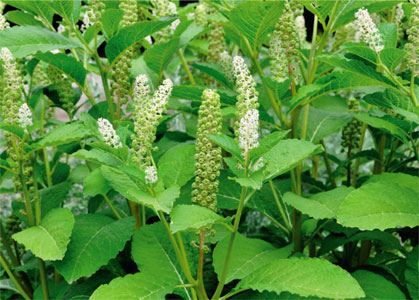
Poke root a North American wild edible that is easy to grow. The cooked shoots are delicious.
Perennials, on the other hand, are usually harvested in a sustainable manner, allowing the plant to continue its growth, so yields can often be less per unit area than those of annual crops.
But things are changing. More and more people are starting to understand that measuring the success of a growing system only in yield or output gives only part of the story. What about carbon emissions? Youll find that tilling the soil annually is one of the worst offenders in agriculture. What about inputs of chemicals? Increasingly, people are unhappy with food grown using chemicals. What about human health? We are what we eat, and youll find that foods from perennial plants almost always contain far more nutrients than those from short-lived plants (see pages 16-17). What about ecosystem health? The growing systems used for perennial plants disturb the environment much less than annual tillage.
Whats more, you dont always have to go far to discover perennial vegetables. Lots of those mentioned in this book grow wild in forests and hedgerows. But why delineate between the wild and the cultivated? You can grow perennial vegetable plants in your own garden in a number of ways and turn harvesting times into an enjoyable forage!
Key to plant descriptions
Under each plant in of this book is a symbol indicating which part(s) of the plant are edible (see box). Also given is the hardiness zone.
Edible parts symbols

Next page
